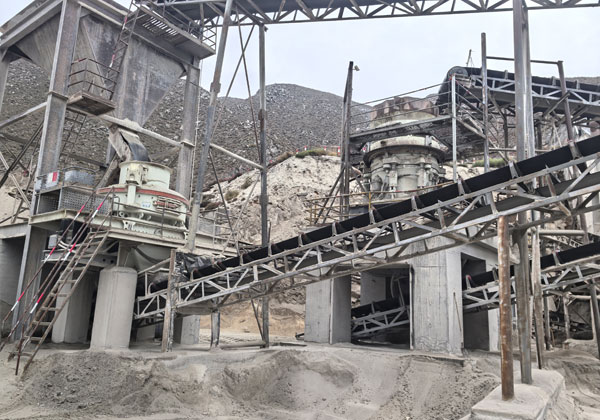Crusher for rock crushing production
A rock crushing production system is an essential aspect of mining, construction, and aggregate industries. Crushers are widely used to break down large rocks into smaller, more manageable sizes that are ideal for various applications such as construction materials, road building, and mineral extraction. In this system, a variety of crushers may be used in combination to optimize the crushing process, which can handle large quantities of material at a time. A rock crusher typically includes primary crushers, secondary crushers, and sometimes even tertiary crushers, each designed to reduce material size progressively.
The first stage in the rock crushing production line involves the primary crusher. The primary crusher is the first piece of equipment the raw material encounters. Its role is to break large rocks into smaller, more manageable sizes. Common types of primary crushers include jaw crushers and gyratory crushers. Jaw crushers are often used due to their reliability and simplicity in handling a variety of rock types. Gyratory crushers are typically used for more substantial operations, capable of handling massive rocks and offering high throughput.

Once the rocks have been processed by the primary crusher, they move onto the secondary crushing stage, where additional crushers further reduce the size of the material. These secondary crushers may include cone crushers, impact crushers, or even hammer crushers. Cone crushers are popular in the secondary stage for their ability to provide a more uniform output size with excellent reduction ratios. Impact crushers, on the other hand, work by utilizing high-speed rotating hammers or blow bars to break down rocks, producing a cubical product that is ideal for high-quality aggregates. These crushers ensure that the material is reduced to the required size, depending on the intended end product.
In some cases, a tertiary crusher is necessary to achieve the desired size for the final product. Tertiary crushers are used when finer materials are needed for specific applications. These crushers typically use similar mechanisms as secondary crushers, but they are designed to produce even smaller material sizes. This step ensures that the product meets the specifications for use in high-demand industries, including construction and asphalt production. Additionally, crushers equipped with specialized screens can be added to separate finer materials from coarser ones to further enhance the quality and utility of the product.
A rock crushing production line also involves various auxiliary equipment, including feeders, conveyors, and vibrating screens, all of which play important roles in facilitating the movement and sorting of the crushed materials. Feeders control the flow of material into the crushers, ensuring an even distribution. Vibrating screens then sort the crushed materials into various sizes, allowing the final product to meet the required specifications. Conveyors are used to move the material from one crusher to another or to transport the final product to stockpiles for storage or shipping.
In conclusion, a rock crushing production system involves a series of crushers working in tandem to reduce raw rock material to smaller, usable sizes. The combination of primary, secondary, and tertiary crushers, along with ancillary equipment, ensures the production of high-quality materials for various industries. The process allows for the efficient handling of large quantities of material, which is essential for large-scale construction and mining projects. With advancements in crusher technology, rock crushing production lines continue to improve in efficiency, reducing downtime and increasing productivity.
